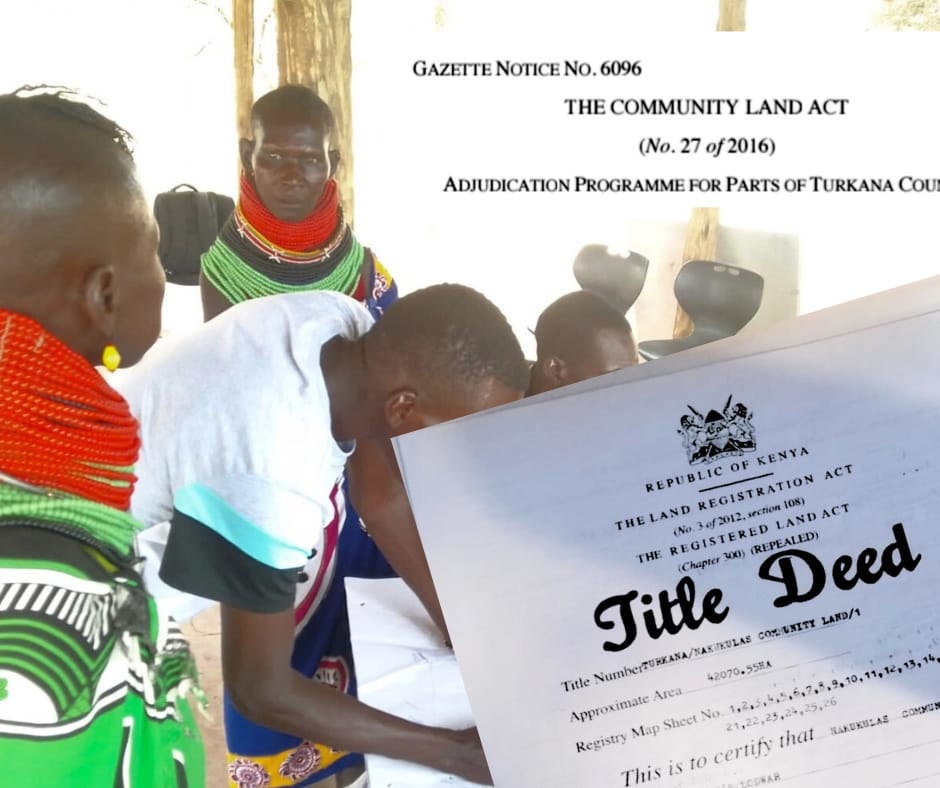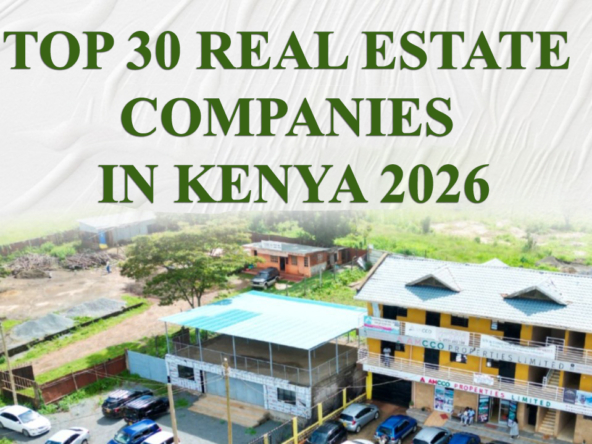Community Land Kenya: 7 Vital Legal Insights for Investors
For investors navigating Kenya’s dynamic real estate landscape, understanding the nuances of land ownership is paramount. Beyond the more commonly discussed freehold and leasehold tenures, a distinct and increasingly significant category is Community Land Kenya. Established by the Constitution of Kenya 2010 and further elaborated by the Community Land Act of 2016, this classification holds unique legal parameters and presents both opportunities and complexities for potential investors. This article provides 7 vital legal insights into Community Land Kenya, guiding you through its recognition, protection, management, and the crucial implications for secure investment.
Understanding Community Land Kenya: A Foundational Overview
The concept of Community Land Kenya is deeply rooted in the nation’s constitutional framework. Article 63 of the Constitution of Kenya, 2010, explicitly classifies land into public, private, and community categories. The Community Land Act of 2016 was enacted to give effect to this constitutional provision, aiming to recognize, protect, and register community land rights, as well as provide for its management and administration. This legal evolution marks a significant shift, elevating community lands to a protected status as property, rather than merely being held in trust by the State.
A “Community” in this context is defined as a consciously distinct and organized group of Kenyan citizens who share attributes such as common ancestry, similar culture, a unique mode of livelihood, or other socio-economic interests. Importantly, the definition is not limited to ethnic lines, allowing for diverse groups to register as communities. The Act requires any community claiming an interest in or right over community land to be formally registered.
This legal recognition provides communities with the ability to secure a single collective title over all or part of their lands, and to lawfully govern this property. This includes the power to regulate traditionally ‘private’ possession of plots within the community domain, which are often allocated to individual families for settlement or farming purposes. Understanding this foundational aspect is the first vital step for anyone considering investment related to Community Land Kenya.

Tenure Systems Within Community Land Kenya: Beyond Freehold and Leasehold
While Community Land Kenya itself is a classification, it can be held under various land tenure systems, reflecting the diverse ways communities have historically managed their territories. These tenure systems include:
- Customary Tenure: This is based on traditional rules and practices, where land rights are passed down through families or communities. The Community Land Act gives customary land rights equal footing in law as freehold and leasehold tenure, providing for their adjudication and documentation.
- Freehold Tenure: A community, once registered as the proprietor of land, can hold it under freehold tenure, granting them absolute ownership. This vests in the community the absolute ownership of that land.
- Leasehold Tenure: A community can also be registered as the proprietor of a lease, vesting in them the leasehold interest described in the lease. This means they hold rights over the land for a specified period, subject to renewal.
- Other Recognized Tenure Systems: The Act also allows for other tenure systems recognized under the Act or other written law.
Furthermore, Community Land Kenya may be held in various categories, such as communal land, family or clan land, or reserve land. This flexibility in tenure and categorization allows communities to manage their land resources in ways that align with their traditional practices and socio-economic needs, while also providing a framework for formal recognition and potential engagement with external parties.
Registration and Management of Community Land Kenya: Ensuring Legal Standing
The formal registration of Community Land Kenya is a cornerstone of the Community Land Act. A community claiming rights over land must be registered, and this registration vests in that community the absolute ownership (if freehold) or leasehold interest (if leasehold) of the land. This process aims to provide legal certainty and protection for community land rights, which were historically vulnerable.
The management and administration of Community Land Kenya are primarily vested in the community itself, through established structures:
- Community Assembly: This consists of all adult members of the community. It is the supreme decision-making body for the community’s land.
- Community Land Management Committee: This committee is elected by the community assembly and is responsible for the day-to-day functions of managing the community’s land. Their duties include overseeing land use, resolving disputes, and ensuring compliance with community land management plans.
The Act also allows a community, with the approval of its members, to allocate land to a member or a group of members for exclusive use and occupation for a determined time. However, it explicitly states that an individual entitlement shall not be superior to the community title, and a separate title shall not be issued for such individual allocations. This ensures that the collective ownership and governance of Community Land Kenya remain paramount.
Conversion of Community Land Kenya: Pathways to Other Land Categories
The Community Land Act provides mechanisms for the conversion of Community Land Kenya to either public land or private land, and vice versa. This flexibility is crucial for development and public interest projects, but it is subject to strict safeguards to protect community rights. For any conversion of community land, the Act mandates that at least two-thirds of the community members must approve the conversion. This high threshold ensures that decisions regarding the alienation or change of status of community land are made with broad consensus and protect the community’s collective interests.
Conversely, public land can be converted to community land, and private land can also be converted to community land, provided the necessary legal procedures and community consent are obtained. This bidirectional conversion mechanism highlights the dynamic nature of land classification in Kenya and the importance of understanding the legal pathways for each category.
The Role of County Governments in Relation to Community Land Kenya
While communities have significant autonomy in managing their land, county governments also play a role, albeit a limited one, in relation to unregistered Community Land Kenya. The Constitution of Kenya specifies that land survey and mapping, and boundaries and fencing, are the only two land issues which counties may regulate. These functions are directly pertinent to the actions of defining and registering community lands within each county, ensuring proper demarcation and record-keeping.
Furthermore, a County Government is explicitly prohibited from selling, disposing, transferring, converting for private purposes, or in any other way disposing of any unregistered community land that it is holding in trust on behalf of a community. This provision acts as a safeguard against arbitrary alienation of community land by county authorities, reinforcing the constitutional protection afforded to this land category.
Investment Implications for Community Land Kenya: Opportunities and Risks
Investing in or engaging with Community Land Kenya presents a unique set of opportunities and risks for both local and foreign investors. Understanding these implications is crucial for successful and sustainable ventures.
Opportunities:
- Large Tracts for Development: Community lands often comprise large, contiguous tracts, making them suitable for large-scale agricultural projects, eco-tourism ventures, or even industrial developments, provided community consent and legal frameworks are in place.
- Partnerships with Communities: Investors can engage in joint ventures or partnerships with communities, leveraging local knowledge and labor while providing capital and expertise. This can lead to mutually beneficial projects that contribute to community development.
- Untapped Potential: Many community lands are in areas with significant untapped natural resources or tourism potential, offering unique investment niches.
- Long-Term Leases: While direct freehold ownership by foreigners is restricted, long-term lease agreements with registered communities can provide secure tenure for investment projects.
Risks and Challenges:
- Legal Loopholes and Formalization Risks: Despite the Community Land Act, legal loopholes can still place communities at risk of their lands not being as secure as promised ahead of formalization, or at risk of losing some of their most valuable lands during the formalization process. Investors must be aware of these potential vulnerabilities.
- Need for Community Consent: Any investment or development on Community Land Kenya requires the explicit approval of at least two-thirds of the community members. This process can be lengthy and complex, requiring careful negotiation and trust-building.
- Potential for Disputes: Without proper documentation and clear governance structures, disputes over land boundaries, ownership, or benefit-sharing can arise, leading to project delays or legal challenges.
- Cultural and Social Considerations: Investors must be sensitive to the cultural practices and social structures of the communities. Projects that do not align with community values or fail to provide equitable benefits may face resistance.
- Unregistered Land: Dealing with unregistered community land, which is held in trust by county governments, carries higher risks as its status is less formalized.
To mitigate these risks, thorough due diligence is paramount. This includes verifying the community’s registration, understanding their governance structures, obtaining clear and documented consent for any proposed project, and ensuring all transactions comply with the Community Land Act and other relevant laws. Engaging experienced Kenyan property lawyers is indispensable for navigating these complexities and structuring secure investment frameworks.
Conclusion: Navigating Community Land Kenya for Secure Investment
The legal framework governing Community Land Kenya represents a progressive step towards recognizing and protecting the rights of indigenous and local communities. For investors, it introduces a distinct category of land that, while offering unique opportunities, demands a comprehensive understanding of its specific regulations and inherent complexities. Success in investing in or partnering on Community Land Kenya hinges on meticulous due diligence, transparent engagement with community structures, and strict adherence to legal requirements.
By respecting the collective ownership, securing proper consent, and working with experienced legal professionals, investors can unlock the vast potential of these lands, contributing to both their financial success and the sustainable development of Kenyan communities. Understanding Community Land Kenya is not just a legal necessity; it is a strategic imperative for any investor seeking to make a meaningful and secure impact in the country’s diverse real estate landscape.
Frequently Asked Questions (FAQs) about Community Land Kenya
Q1: What is Community Land Kenya?
Community Land Kenya is a classification of land recognized by the Kenyan Constitution (2010) and the Community Land Act (2016). It is land vested in and held by communities, defined as distinct groups of Kenyan citizens sharing common ancestry, culture, livelihood, or interests.
Q2: Can foreigners invest in Community Land Kenya?
Foreigners cannot directly own freehold Community Land. Investment is typically possible through long-term lease agreements with registered communities or through joint ventures with Kenyan-incorporated companies that comply with local ownership requirements and obtain community consent.
Q3: What are the main types of tenure systems within Community Land Kenya?
Community Land can be held under customary, freehold, or leasehold tenure systems, as well as other systems recognized by law. Customary land rights are given equal legal footing as freehold and leasehold.
Q4: What is the role of the Community Land Management Committee?
The Community Land Management Committee is elected by the community assembly and is responsible for the day-to-day management and administration of the community’s land, including overseeing land use and resolving disputes.
Q5: How is Community Land Kenya converted to other land categories?
Community Land can be converted to public or private land, and vice versa. Any conversion requires the approval of at least two-thirds of the community members, ensuring collective decision-making.




